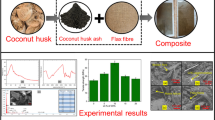Abstract
The main objective of this work was reducing the heat loss of styrene butadiene rubber by partial substitution of carbon black with natural zeolite as a filler. Reducing the usage of carbon black in the rubber industry is a good strategy to decrease fossil fuel usage and global warming. There are different mineral fillers like silica and clay to be used instead of carbon black. Effect of application of natural zeolite on reducing the heat loss of rubber compound based on SBR was investigated by melt mixing of natural zeolite in rubber matrix in an internal mixer. Natural zeolite was selected as 5, 10, 15, and 20 phr. Carbon black was partially substituted with zeolite and the effect of natural zeolite content and structure on different aspects of the compound including heat buildup, hardness, elongation, and modulus were evaluated. It was shown that although cross-link density and mechanical properties of the compounds decreased a little, but a significant improvement was observed in the fatigue resistance of the compounds beside a favorable decrease in the heat buildup and abrasion loss with an increase in the natural zeolite loading. The rate of improvement in properties was slowed down at zeolite contents higher than 5 phr.









Similar content being viewed by others
References
Ondrusova D, Kopcová M, Pajtášová M, Ďurčeková M, Čechová M, Jankurová Z, Jóna E (2012) Substitution of carbon black by zeolite nano filler in the rubber compounds. Univ Rev 6:63–66
Al-Ghamdi AMS, Mark JE (1988) Zeolites as reinforcing fillers in elastomers. Polym Bull 20:537–542
Mihara S (2009) Reactive processing of silica-reinforced tire rubber: new insight into the time- and temperature-dependence of silica rubber interaction. Ph. D. thesis, University of Twente
Wang J, Yang K, Zheng X (2009) Studies on the effect of 4A zeolite on the properties of intumescent flame retardant agent filled natural rubber composites. J Polym Res 16:427–436
Ray SS, Okamoto M (2003) Polymer/layered silicate nanocomposites: a review from preparation to processing. Prog Polym Sci 28:1539–1641
Ginting EM, Bukit N (2015) Preparation and characterization of natural zeolite and rice husk ash as filler material HDPE thermoplastic. Chem Mater Res 7:20–27
Frohlich J, Niedermeier W, Luginsland HD (2005) The effect of filler-filler and filler-elastomer interaction on rubber reinforcement. Compos Part A-Appl S 36:449–460
Wen J, Mark JE (1994) Mechanical properties and structural characterization of poly(dimethyl siloxane) elastomers reinforced with zeolite fillers. J Mater Sci 29:499–533
Ghosh S, Sengupta RA, Kaliske M (2014) Prediction of rolling resistance for truck bus radial tires with nanocomposite based tread compounds using finite element simulation. Rubber Chem Technol 87:276–290
Zafarmehrabian R, TaghvaeiGangali S, Ghoreishy MHR, Davallu M (2012) The effects of silica/carbon black ratio on the dynamic properties of the tread compounds in truck tires. E-J Chem 9:1102–1112
Wang HP, Lin KS, Huang YJ, Li MC, Tsaur LK (1998) Synthesis of zeolite ZSM-48 from rice husk ash. J Hazard Mater 58:147–152
Tosheva L, Valtchev VP (2005) Nanozeolites: synthesis, crystallization mechanism, and applications. Chem Mater 17:2494–2513
Gultom F, Wirjosentono BT, Nainggolan HE (2015) Preparation and characterization from natural zeolite sarulla of north sumatera polyurethane nanocomposite foams. Chem Mater Res 7:20–28
Perera DGPM., Kumanayaka TO, Walpalage S (2015) Effect of zeolite on the properties of natural rubber foams. Int J Sci Res 5:1–4
Gultom F, Wirjosentono BT, Nainggolan HE (2016) Preparation and characterization of North Sumatera natural zeolite polyurethane nanocomposite foams for light-weight engineering materials. Procedia Chem 19:1007–1013
Wen J, Mark JE (1994) Mechanical properties and structural characterization of poly(dimethylsiloxane) elastomers reinforced with zeolite fillers. J Mater Sci 29:499–503
Hsu HL, Ju HY, Kumari P, Roselin S, Selvin R (2012) Synthesis of hierarchical porous structures in zeolites using rubber latex as macromolecular templates. 3rd Int Conf Chem Chem Eng IPCBEE, vol 38. IACSIT Press, Singapore
Agostini G, Corvasce FG, Lechtenboehmer A (2009) A rubber composition including nano-zeolite and a tire with a component having such a composition. EP 1772484:B1
Ondrusova D, Buňová L, Ďurčeková M, Domčeková S, Pajtášová M, Liptáková T (2016) Influence of silanization conditions of filler based on clinoptilolite on its efficiency in polymeric systems. Procedia Eng 136:321–327
Maeda K, Mizukami F (1999) Organozeolite materials and their properties. Catal Surv Asia 3:119–126
Li SD, Peng Z, Kong LX, Zhong JP (2006) Thermal degradation kinetics and morphology of natural rubber/silica nanocomposites. J Nanosci Nanotechnol 6:541–546
Amnuaypanich S, Patthana J, Phinyocheep P (2009) Mixed matrix membranes prepared from natural rubber/poly(vinyl alcohol) semi- interpenetrating polymer network (NR/PVA semi-IPN) incorporating with zeolite 4A for the pervaporation dehydration of water–ethanol mixtures. Chem Eng Sci 64:4908–4918
Acknowledgements
The authors are grateful to The Research and Development Office of Iran Tire Factory, Iran and Ministry of Science Research and Technology of Iran for funding this project.
Author information
Authors and Affiliations
Corresponding author
Rights and permissions
About this article
Cite this article
Hassankhani, H., Atashi, H. & Mohebbi-Kalhori, D. Reducing of heat loss of rubber compound using natural zeolite filler: effect of partially substitution of fillers on compound properties. Iran Polym J 27, 555–561 (2018). https://doi.org/10.1007/s13726-018-0632-7
Received:
Accepted:
Published:
Issue Date:
DOI: https://doi.org/10.1007/s13726-018-0632-7




